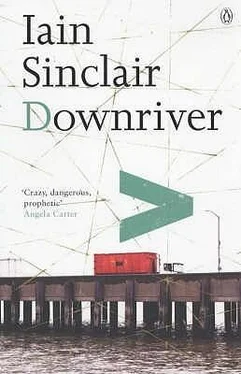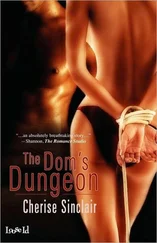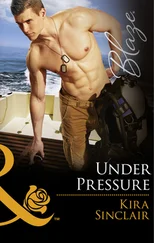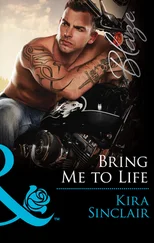III
‘When your ghost comes to me, I will tell you
What it is that I now pursue…’
Nicholas Moore, ‘The Last Poem’
I had my testament, the evidence of the tape. But was it admissible? It could be replayed. (It had to be, endlessly, inch by inch; a finger-blistering chore.) It could be verified. (Always the same sounds, until the tape pulls loose on the cassette, called upon to perform once too often, this brown slick of dental floss. The miracle of the machine is finite. In my case, very .) And, yes, the version offered in this book has been abridged, with minor details corrected; obviously, I tried to focus on the elements useful to my theme. (I left out the side of near silence, when I pressed the buttons in the wrong order.) I was trying to discover how much the contemporary Cambridge poet felt that he was ready to accept the role of scapegoat, the condition of exile. If the culture at large refuses to imagine your existence, how strong is the impulse to spit in its eye? Or: do you stick modestly to your last and wait (to the death) for a tap at the window?
I always leave these meetings burdened with an obscure sense of guilt. Something to do with the ambivalence of dealing in books and failing to write them (and: writing them and failing to ‘deal’in them). Cambridge itself is the corporate manifestation of guilt, the brand leader, the architecture of guilt — corridors of the stuff; moulded, sprayed and cast. A memorial park themed in stalled art: morality tribunals programmed for one verdict. Guilty! Paragraphs by Henry James that can be unwrapped only in spasms of blushing shame.
The meeting happened, devoured its time, as I planned that it should. There is a colour photograph of Peter Riley, at the end of the table, side-on, half-turned to look down on the microphone, the silver weapon. The casual details accumulate: the wine bottle (drunk to an inch below the label), the bowl of oranges, low-fat spread, carton of fruit juice. Then; the pale-yellow door (its paintwork bubbling under the abrupt severity of the flash), the garden beyond, the slate-blue bookshed. It is possible, with care, to make out the titles of a few oversize volumes in the corner cabinet: A Pictorial History of Jazz, Antisuyo, Paris Imprévue . The focus is very slightly soft, but the occasion is there to be remembered. Parts of it are fixed.
Yet I was not quite satisfied. I had got no more than I set out to get. The taped interview, like its flashier television counterpart, necessarily gives you no more than you ask for. The answers are all implied in the questions. If the ‘subject’dares to break into some thicket of improvisatory parentheses, he has to be dragged back — kicking and screaming. Truth never did climb off the cutting-room floor.
My thesis had to take a more extreme form. Pain, madness, mutilation: all the showbiz shamanist tokens that would authenticate my quest. I put a photocopy of Nicholas Moore’s ‘Last Poem’ in my pocket and set out to follow the River Darent, from the Thames at Crayford Ness through Dartford Marshes, until it divided, to be rechristened as the Cray. I hoped to track the stream as it meandered south, between tumps of undifferentiated settlement and the open-field illusion of golf courses, hospital woods, cemeteries, and humiliated farms. At St Mary Cray I would identify Nicholas Moore’s house, and take the snapshot Peter Riley requested, as we stood talking on his doorstep.
I clung to the irrational belief that the third sequence of Moore’s final poem, the ‘lost’ coda, would deliver itself up to me in the course of my pilgrimage: and not, as Riley claimed, stay ‘stored as electrical connections’ in the dead poet’s brain. Irretrievable; ‘out with him’. Holding page sixty-one, the blank (expectant space) finish of Lacrimae Rerum , Moore’s posthumous selection, to the light reveals a reversed text; the editor’s ‘note’ coming through like a spirit message from the far side of the paper. It cannot be interpreted, but it offers a ruled garden on which the number ( III ) signifies the gap in which the poem could still resolve itself. A sinistral, mirror world in which the italicized word  stands out.
stands out.
In the second section of the ‘Last Poem’ (though addressed to the loved one, or Muse) there is a deliberate Hamlet-echo of pursuit, inheritance, chill: the elongated boredom of unfulfilled death. And the cold. The words evaporate in the tall corridors of a skull-castle. A son’s father returns with questions, dripping earth: ventriloquist of self-inflicted guilt.
This paper voice tracked me, folded and refolded into a zipped pocket, as the train jolted once more towards North Woolwich, and the ferry crossing. Despite official radio warnings — I couldn’t wait in the house long enough to drag a coat from the cupboard — it was a fine, bright, high-cloud morning. The ‘free’ ferry celebrated its role in the narrative by carrying no other passengers. Do they know something? They have all shuffled down the foot tunnel. The green river shines like crocodile mud. The south shore is more of a promise than a threat. The rail connection to Erith offers intriguing glimpses, scrub-covered slopes on which to imagine the Abbey (rems of) Lesnes. And the more recently imposed fantasy of Thamesmead.
Detrained at Erith, it is a considerable effort to shake free from the town. The river is guarded by a succession of scrapyards, metal fanciers, supplicants for brazery, machine cannibals: only the most dog-footed plodder, sampling each fresh lane, will eventually clear the buildings; and then the fields open gloriously to the waterline. The Thames is almost domesticated, frisky, Edwardian, a tributary of itself; pleasure boats ride at anchor. I walk, among tethered horses, on an elevated pathway: distant flashes of Dartford. The revolving shadow of the radar scanner on the Crayford Ness beacon plays on a low wall. A peaked sun projects this illusion: the silhouette of an amputee wrestler, frenetically warming up. The creek mouth has a scimitar tide of driftwood, cans, plastics — an over-eager Richard Long installation, an unscavenged beach.
There is a formal, twin-towered rivergate where the rib of the Darent splits from the Thames and begins its own journey. Lost land. Game birds thrash from cover at my approach, shoot out over the water, decoying attention: rubbish fires drift gritty blue smoke from fenced yards. Dumper trucks, far away, grind and drone, tipping out the endless intestinal waste of the towns. The young river wanders, is alive; its surface shimmering, burning with gold scraped from the rims of heavy coins. I cling to the bank until the Darent parts from the Cray, and the view to the south-west is of mean over-settled hills.
The Cray, according to Barry MacSweeney who walked part of it as ‘a hack on the Kentish Times ’, was once a ‘first-class trout stream, used by Henry VIII’. At its mouth it is still unspoilt, a surprising thatch of river wheat, tawny with feather-headed rushes. A small Egypt, Mosaic in implication: a removed place.
But here a path cuts between hedges, back towards Slade Green: a solitary track across Crayford Marshes. An old man, black-jacketed, plods down this narrowing tunnel of perspective; limping, leaning on a stick. I stop to watch, and (of course!) to project on him the spectral avatar of Nicholas Moore. Let him go. I force myself to heed Douglas Oliver’s warning about believing ‘every lame man was a messianic sign’. The figure recedes very slowly, weak-footed, lurching inexplicably from verge to verge, avoiding the gravelled camber at the centre of the lane, tapping for grassy softness.
Читать дальше

 stands out.
stands out.










